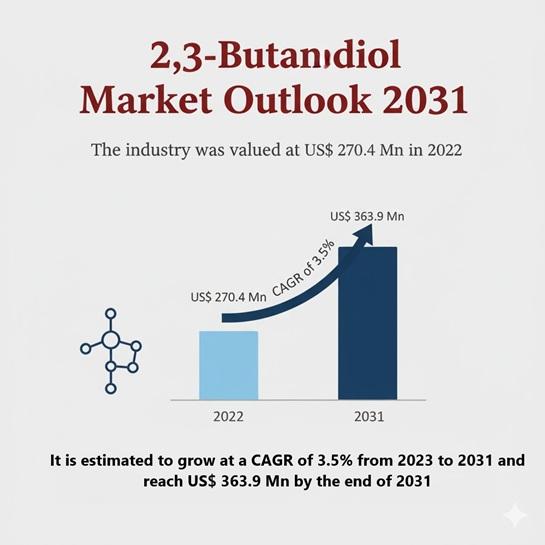The impact of embedded global innovation networks on manufacturing value chains – Nature

Report on the Impact of Global Innovation Networks on Manufacturing Value Chains and Sustainable Development
Executive Summary
This report analyzes the impact of embeddedness in Global Innovation Networks (GINs) on the manufacturing sector’s position within Global Value Chains (GVCs). The analysis reveals that while deeper integration into GINs generally promotes upgrading within the GVC, the benefits are unevenly distributed between developed and developing economies. This disparity poses significant challenges to achieving the United Nations Sustainable Development Goals (SDGs), particularly SDG 9 (Industry, Innovation, and Infrastructure), SDG 8 (Decent Work and Economic Growth), SDG 10 (Reduced Inequalities), and SDG 17 (Partnerships for the Goals). The findings indicate that for global innovation partnerships to be truly sustainable and equitable, developing nations must enhance their absorptive capacities and be supported by balanced institutional frameworks, such as intellectual property rights (IPR) protection, that foster rather than hinder their technological advancement.
1. Introduction: Innovation, GVCs, and the Sustainable Development Agenda
In an era of advanced globalization, a nation’s position in the Global Value Chain (GVC) is a key determinant of its economic competitiveness and progress towards sustainable development. Technological innovation is the primary catalyst for ascending the GVC. Consequently, participation in Global Innovation Networks (GINs) has become a strategic imperative for nations seeking to achieve sustainable industrialization as outlined in SDG 9. These networks offer access to international resources, fostering innovation and promoting economic growth (SDG 8).
However, the integration of developing economies into GINs presents a dual narrative. While it offers opportunities for technological catch-up, it also carries the risk of “low-end lock-in,” where nations remain confined to low-value-added activities. This potential outcome threatens to widen the gap between developed and developing nations, directly contradicting the objective of SDG 10 (Reduced Inequalities). This report systematically examines the impact of GIN embeddedness on manufacturing GVCs to provide evidence-based insights for creating equitable and effective global partnerships for sustainable development (SDG 17).
2. Analysis of Key Findings
2.1. The Positive Impact of GIN Embeddedness
The study empirically demonstrates that integration into GINs has a significant positive effect on a country’s manufacturing GVC position. This is measured through two key metrics:
- Embedding Breadth: A wider range of innovation partners allows economies to access diverse technological resources, enhancing innovation capabilities and competitiveness. This directly supports the targets of SDG 9 by fostering resilient and innovative industrial sectors.
- Embedding Depth: More frequent and intense collaborations foster closer relationships, promoting the generation of high-impact innovations and helping firms consolidate their GVC positions, which contributes to sustained economic growth (SDG 8).
The mechanisms driving this upgrading are identified as human capital structure upgrading and technological progress, both of which are fundamental pillars for building a knowledge-based economy aligned with the SDGs.
2.2. Heterogeneous Effects and the Challenge to SDG 10
A critical finding of this report is the significant heterogeneity in outcomes between developed and developing economies. This disparity highlights a major challenge for the global commitment to reduce inequality (SDG 10).
- Developed Economies: Possessing strong absorptive capacities and advanced technological endowments, these nations leverage GINs to reinforce their leadership positions, significantly enhancing their manufacturing GVC standing. This demonstrates a successful application of global partnerships (SDG 17) for national benefit.
- Developing Economies: These nations face a more precarious situation. The analysis shows that GIN embeddedness does not guarantee an upgraded GVC position. In fact, high embedding depth, without corresponding domestic capabilities, can lead to a “low-end lock-in.” This phenomenon traps economies in low-value segments, hindering their progress towards sustainable industrialization (SDG 9) and decent work (SDG 8).
This divergence underscores that simply participating in global partnerships is insufficient. The quality and equity of these partnerships are paramount for achieving inclusive development.
2.3. The Moderating Role of Intellectual Property Rights (IPR)
The institutional environment, particularly IPR protection, plays a crucial moderating role in shaping the outcomes of GIN participation. The effects of IPR regimes differ starkly between developed and developing nations, impacting the fairness of global innovation systems.
- In developed economies, strong IPR protection enhances the positive impact of GIN embeddedness, as it safeguards innovation returns and encourages further R&D investment.
- In developing economies, overly stringent IPR protection can suppress the potential benefits of GINs. By restricting technology absorption, imitation, and re-innovation—critical pathways for technological learning—it can inhibit GVC upgrading. This creates a barrier to achieving SDG 9 and exacerbates global inequalities (SDG 10).
3. Conclusion and Policy Recommendations for Sustainable Development
This report concludes that while GINs are powerful engines for industrial upgrading, their benefits are not automatic and risk reinforcing global economic divides. To align the function of GINs with the 2030 Agenda for Sustainable Development, a strategic and nuanced approach is required. The following policy recommendations are proposed:
- Foster Equitable Global Partnerships (SDG 17): Both developed and developing economies must promote international cooperation in science and technology. However, these partnerships should be structured to ensure mutual benefit and facilitate genuine knowledge transfer, preventing the exploitation of weaker partners.
- Strengthen Domestic Innovation Capabilities (SDG 9): For developing economies, the key to benefiting from GINs is to build strong domestic absorptive and innovation capacities. Governments should invest in education, R&D infrastructure, and human capital to ensure they can effectively absorb, adapt, and build upon external knowledge. This is essential for achieving technological self-reliance and moving up the value chain.
- Develop Balanced Institutional Frameworks (SDG 10): Developing countries must design IPR regimes that are appropriate for their stage of development. Policies should strike a balance between protecting innovation and enabling the technology diffusion and learning necessary for industrial upgrading. This strategic approach to institutional design is critical for ensuring that global innovation systems contribute to reducing, rather than increasing, global inequalities.
Analysis of Sustainable Development Goals (SDGs) in the Article
1. Which SDGs are addressed or connected to the issues highlighted in the article?
The article on Global Innovation Networks (GINs) and their impact on manufacturing Global Value Chains (GVCs) is directly and indirectly connected to several Sustainable Development Goals. The core themes of innovation, industrial development, economic growth, global partnerships, and the disparities between developed and developing nations are central to the SDG framework.
- SDG 8: Decent Work and Economic Growth: The article’s focus on enhancing a country’s position in the GVC, improving competitiveness, and achieving “high-quality growth” directly relates to promoting sustained, inclusive, and sustainable economic growth. It also touches upon the negative aspects, such as the risk of “immiserizing growth” for developing economies, which is a key concern for sustainable economic development.
- SDG 9: Industry, Innovation and Infrastructure: This is the most prominent SDG in the article. The entire study revolves around “global innovation collaboration,” “technological innovation,” “manufacturing industries,” and “R&D.” It explicitly examines how innovation networks (a form of infrastructure for knowledge) impact industrial upgrading and a country’s technological capabilities, which are the core tenets of SDG 9.
- SDG 10: Reduced Inequalities: The article consistently draws a distinction between the outcomes for “developed economies” and “developing economies.” It highlights the risk of a “low-end lock-in” for developing nations, where they remain trapped in low-value segments of the GVC. This analysis of asymmetrical outcomes and structural disadvantages directly addresses the goal of reducing inequality within and among countries.
- SDG 17: Partnerships for the Goals: The concept of Global Innovation Networks (GINs) is, by definition, about global partnerships. The article analyzes the structure (“embedding breadth” and “embedding depth”) and impact of these international collaborations on technology, innovation, and economic upgrading, which aligns perfectly with SDG 17’s emphasis on strengthening the means of implementation and revitalizing the global partnership for sustainable development, particularly in the area of technology and innovation.
2. What specific targets under those SDGs can be identified based on the article’s content?
Based on the article’s detailed analysis, several specific SDG targets can be identified:
-
Target 8.2: Achieve higher levels of economic productivity through diversification, technological upgrading and innovation, including through a focus on high-value added and labour-intensive sectors.
Explanation: The article’s central theme is that “Technological innovation is the primary catalyst for improving the GVC position.” It investigates how participation in GINs allows economies to access international innovation resources to “accelerate R&D impact” and achieve “technological upgrading,” which directly supports this target. -
Target 9.2: Promote inclusive and sustainable industrialization and, by 2030, significantly raise industry’s share of employment and gross domestic product, in line with national circumstances, and double its share in least developed countries.
Explanation: The study’s focus on the “manufacturing industry” and its structural upgrading within the GVC directly relates to promoting industrialization. The finding that developing economies face risks of “low-end lock-in” highlights the challenges in achieving *inclusive* industrialization. -
Target 9.5: Enhance scientific research, upgrade the technological capabilities of industrial sectors in all countries, in particular developing countries… encouraging innovation and substantially increasing the number of research and development workers… and public and private research and development spending.
Explanation: The article empirically examines how GINs, constructed from “patent cooperation data,” affect technological capabilities. It discusses how collaboration enhances “innovation capabilities,” “technology absorption,” and “technological progress,” and it uses “innovation expenditure to GDP” as a control variable, all of which are central components of this target. -
Target 9.b: Support domestic technology development, research and innovation in developing countries, including by ensuring a conducive policy environment…
Explanation: The article’s investigation into the moderating effect of “Intellectual property rights (IPR) protection” is a direct analysis of the “conducive policy environment.” It finds that strong IPR can suppress GVC upgrading in developing economies, providing a critical policy insight relevant to this target. -
Target 10.a: Implement the principle of special and differential treatment for developing countries, in particular least developed countries…
Explanation: The study’s conclusion that IPR protection has heterogeneous effects—benefiting developed economies while potentially harming developing ones—argues for a nuanced policy approach. This supports the rationale behind special and differential treatment, suggesting that a one-size-fits-all institutional framework for innovation is not equitable. -
Target 17.6: Enhance North-South, South-South and triangular regional and international cooperation on and access to science, technology and innovation and enhance knowledge sharing on mutually agreed terms…
Explanation: The article’s entire subject, GINs, represents a form of “international cooperation on… science, technology and innovation.” The study analyzes the structure of these networks and the mechanisms of “technology transfer and knowledge sharing” that occur within them.
3. Are there any indicators mentioned or implied in the article that can be used to measure progress towards the identified targets?
Yes, the article explicitly defines and uses several quantitative indicators to conduct its empirical analysis. These can serve as direct or proxy indicators for measuring progress towards the identified SDG targets.
- GVC Position (GVCP): Defined as a measure of a country’s value capture capability in the global value chain, it serves as an indicator for Target 8.2 by quantifying the outcome of technological upgrading and productivity improvements.
- Embedding Breadth (Degree Centrality) and Embedding Depth (Degree Intensity): These are the core metrics used in the study to measure a country’s participation in GINs. They are direct indicators for Target 17.6, as they quantify the scope and intensity of international innovation cooperation.
- Number of Co-invention Patents (PCT applications): This is the raw data used to construct the GINs. It is a direct indicator for Target 9.5, measuring collaborative R&D output.
- Technological Progress (TFP): The article uses Total Factor Productivity (TFP) as a mediating variable to represent technological progress. This is a classic indicator for measuring progress under Target 8.2 and Target 9.5.
- Human Capital Structure Upgrading (Labor force): Measured as the “proportion of the labor force with higher education,” this is used as a mechanism to test the hypothesis. It relates to the R&D workforce aspect of Target 9.5.
- Intellectual Property Rights (IPR) Protection Index: The article uses an IPR index to test its moderating effect. This serves as a quantifiable measure of the “conducive policy environment” mentioned in Target 9.b.
- Technological Distance from Frontier: Measured by the “gap between each economy’s TFP and that of the United States,” this indicator is used to analyze heterogeneity. It serves as an implicit indicator for Target 10.a by quantifying the technological gap between developed and developing nations.
4. Table of SDGs, Targets, and Indicators
| SDGs | Targets | Indicators Identified in the Article |
|---|---|---|
| SDG 8: Decent Work and Economic Growth | Target 8.2: Achieve higher levels of economic productivity through diversification, technological upgrading and innovation. |
|
| SDG 9: Industry, Innovation and Infrastructure | Target 9.2: Promote inclusive and sustainable industrialization. |
|
| Target 9.5: Enhance scientific research, upgrade the technological capabilities of industrial sectors… encouraging innovation. |
|
|
| Target 9.b: Support domestic technology development, research and innovation in developing countries, including by ensuring a conducive policy environment. |
|
|
| SDG 10: Reduced Inequalities | Target 10.a: Implement the principle of special and differential treatment for developing countries. |
|
| SDG 17: Partnerships for the Goals | Target 17.6: Enhance North-South… international cooperation on and access to science, technology and innovation and enhance knowledge sharing. |
|
Source: nature.com

What is Your Reaction?
 Like
0
Like
0
 Dislike
0
Dislike
0
 Love
0
Love
0
 Funny
0
Funny
0
 Angry
0
Angry
0
 Sad
0
Sad
0
 Wow
0
Wow
0
















































































